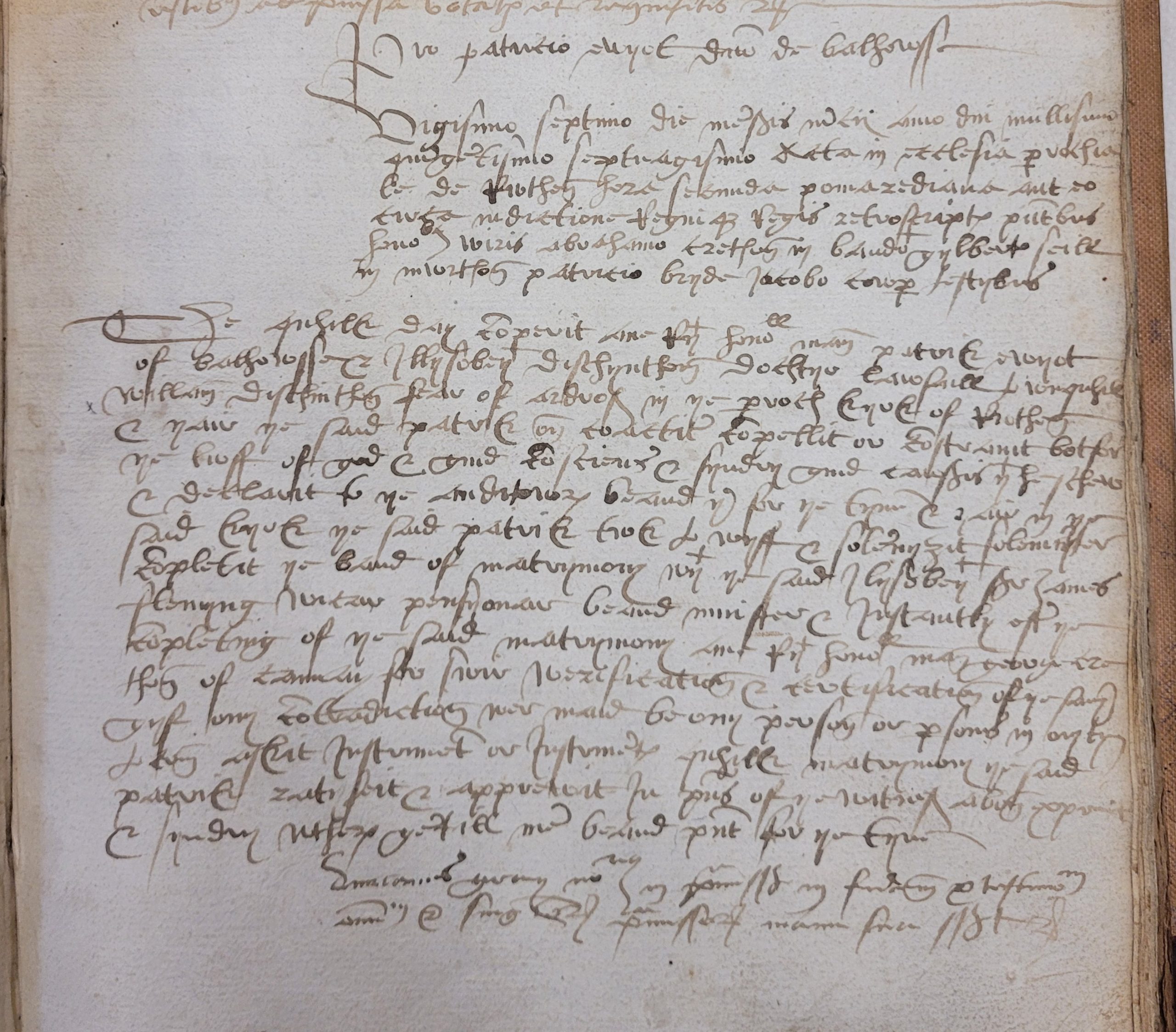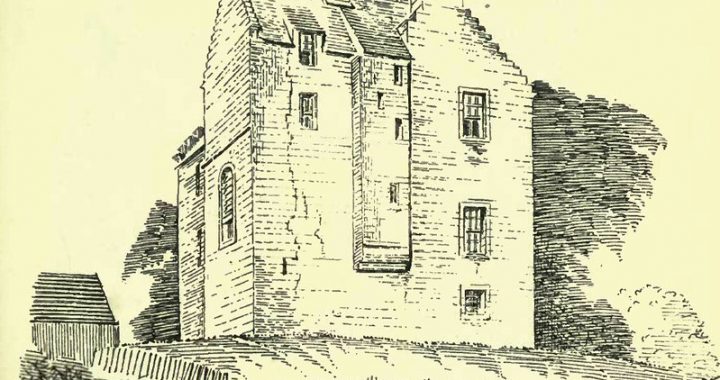For those periods in time for which few parish registers survive, establishing precise dates of marriage can be a difficult task and therefore entries as these contained within Protocol Books are exceptionally useful. This particular one records the marriage at Ruthven Kirk, in Angus, on 27 March 1570 of Patrick Eviot of Balhoussie and Elizabeth Dischington, daughter of the late William Dischington, fair of Ardross, and can be found at NRS NP1/16/62r. Comparing that date with that of their marriage contract - 17 July 1569 (for which see NRS RD1/1/344) is of immediate interest as, both parties being adults, it was normal for a wedding to follow within weeks of a contract being finalised not months, as in this case. A further point of curiosity is that neither the bride or groom were parishioners of Ruthven.
 The case for the existence of an underlying irregularity relating to both the delay as well as the location is conveniently proved by further evidence, particularly that at NRS CC8/2/4/ff.318v-319r, which records an action finally heard by the Edinburgh Consistorial Court on 11 July 1570, raised by Helen Barclay, "dochter lauchfull to vmqhile Robert Barclay of Strowy" against Patrick Eviot on account of her;
The case for the existence of an underlying irregularity relating to both the delay as well as the location is conveniently proved by further evidence, particularly that at NRS CC8/2/4/ff.318v-319r, which records an action finally heard by the Edinburgh Consistorial Court on 11 July 1570, raised by Helen Barclay, "dochter lauchfull to vmqhile Robert Barclay of Strowy" against Patrick Eviot on account of her;
"being than stewart in the saudis Patrikis house continent in service thereof in the saudis Patrikis house' thaireftier, quhill xxvii day of / the said month; & than the said Patrik desyrit to haif had carnall copulatioun with the said Helene, to the quhilk scho on na wayis wald consent to do the samyn without he wald take hir to his mereit wiff. And the said Patrik, than knawand hir to be the honest woman, vpoun, the said xxvii day of November or thairby the zeir foirsaid, the said Patrik promist to tak hir to his wife & to compleit the band of matremoney with hir in face of haly Kirk, lik as he than promest to do the samyn in presence of Helen Ross lady Strowy, hir moder; and in respect of the said promeis' the said Helene Barclay gaiff the vse of hir body be carnell copulatioun to the said Patrik, as to him qua had promeist hir mariage as said is; and thair efter remanit with the said Patrik within the said place of Balhoussy in mutuall cohabitatioun, havanad the vse of hir body quhill the feist of Whitsone nixt thairefterto, and begat vpoun hir any sone, baptezit in his name and at his command, callit Robert Eviot, under promise of marriage foirsaid, accepted be the said Helene the said xxvii day of November the zeir of foirsaid or thairby. Nocht the less the said Patrik in na weyis will complleit nor solempnizet the band of matremoney in face of haly Kirk with the said Helene, treit & interteny hir thairefter as his lauchfull wife, without he be compelled, to the said Helenis hawy dampnage & skaith: As at mair tenth is contenit in the said precept".
The quality of Eviot's character is further eroded when testimony proved that he had conducted himself in the manner described above in the immediate aftermath of his first wife, Margaret Ross's death in November 1566. All evidence considered, he and his new bride's choice of her grandmother, Elizabeth Crichton's home parish of Ruthven where her great-nephew, John Crichton of Ruthven, was principal landowner, as the location for their wedding can only have been a consequence of their skulking there until married and after then, until the dust settled. It is doubtful that on his return to his seat the spirited young Helen Barclay let the matter rest, however, on that point history is silent.
Patrick Eviot was dead by June 1581 but being a minor at his father’s death and still not having attained his majority by August 1535, he cannot have lived to an old age. Of his issue, his eldest surviving son, Colin Eviot, succeeded to his father but being tormented by numerous creditors, he was compelled to sell Balhoussie to Robert Matthew, Merchant in Perth, in 1612. His youngest son, also Patrick, was an adherent of the ill-fated Earl of Gowrie and was present at that nobleman’s town house in Perth during the “conspiracy” in 1600 but escaped censure only to be murdered on 8 April 1608 by his wife, Janet Ross, and her accomplice, James MacNair, who were hanged and then burned for the crime in the playfield of Perth on the following 17 May.
In regard to the Eviot’s settlement at Balhoussie, an oft-repeated statement is that they received those lands from Murdoch, Duke of Albany, in 1422, but that is not correct. John Eviot of Balhoussie had a confirmation for those lands from Albany on 22 July 1422, but that was upon the resignation to John by his father, William Eviot of Balhoussie, who was the eldest son and heir of Richard Eviot who, becoming heir male to Sir David de Eviot of Balhoussie, had a resignation of them from Margaret de Eviot in about 1365. Balhoussie appears to have been acquired by Sir Robert de Eviot who granted lands in Perth to the Carmelite Friars there for the welfare of the soul of the late King Robert sometime between 7 June 1329 and 5 February 1330.
For Eviot of Balhoussie see volume 4 of the Red Book of Scotland.
Gordon MacGregor
